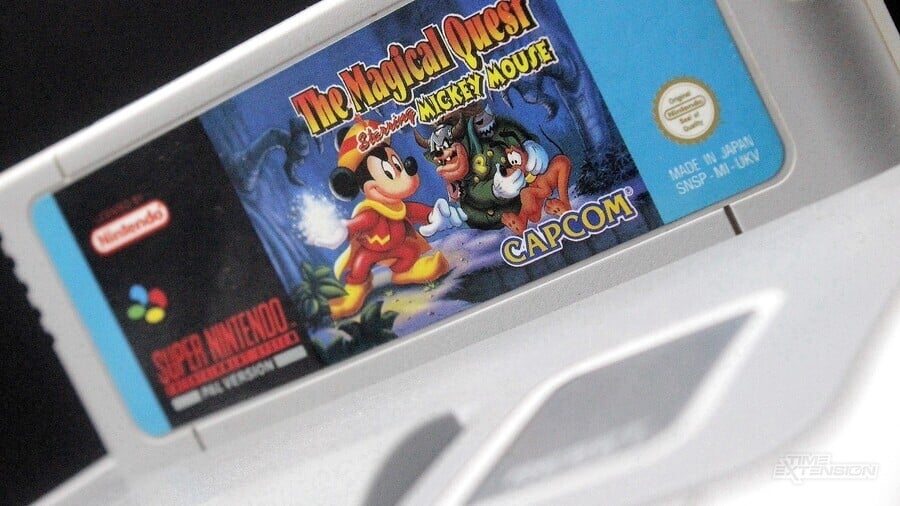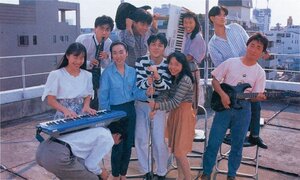
If you grew up playing a lot of Capcom games in the early '90s, you're probably aware of the company's iconic jingle. The memorable piece plays at the start of almost every Capcom game for the Super Nintendo/Super Famicom (as well as a few games for the NES, Mega Drive, Game Boy, and Game Boy Advance) and was the work of Yasuaki "Bun Bun" Fujita, a composer best known for his contributions to the soundtracks of Mega Man 3 and Breath of Fire.
It's only short, clocking in at less than 5 seconds, but has arguably left a huge impression on a generation of 16-bit players, many of whom grew to associate it with quality titles like Disney's Aladdin, The Magical Quest Starring Mickey Mouse, Street Fighter 2, and Mega Man X. So, we wanted to find out as much as possible as we could about it. To do this, we tracked down its elusive composer and also enlisted the help of various musicians to help dissect why — in spite of its length — it has become so iconic.

Yasuaki Fujita is a person who doesn't typically give many interviews, with the musician telling Time Extension that he doesn't particularly like talking about himself. Nevertheless, he was kind enough to agree to give us a few more details about his career, leading up to writing the Capcom jingle. This included his arrival at the company in 1989.
"I was playing in a band and had never heard of video game music or even touched a computer," says Fujita. "I had heard about Capcom through a band member (who was working as a graphic designer at the company). It was through them that I got an interview at the company and eventually got the job."
According to Fujita, his first role after joining Capcom was an uncredited contribution to the soundtrack of the arcade beat 'em up Final Fight, something he talked about in a 2011 blog post. He doesn't have a clear memory of his work on the game but claims that it was for a stage featuring lava running through it, calling to mind the fourth area of the game: the industrial zone.
In 1990, he then served as an assistant for the senior Capcom composer Harumi Fujita (no relation) on Mega Man 3 for the NES, before reluctantly having to take over the project when the lead composer gave birth. Yasuaki Fujita wrote nearly every track on Mega Man 3's soundtrack, apart from the music for Needleman, Geminiman, and a section of the staff roll.
For much of his time at Capcom, Fujita tells us he took advantage of Roland equipment, which the studio had gifted him upon joining (with one of his favourite pieces of kit being the U-220 sound module). His philosophy for songwriting was simple: "to write music that players will enjoy and will be moved by". And this definitely applies to his later work on the Capcom jingle.
Yasuaki Fujita described the short piece of music as "nostalgic" when we first contacted him about it, but sadly — and this is somewhat of a recurring theme with much of his earlier work — he doesn't remember much about how it came to be. We tried to reach out to some of Fujita's fellow composers at Capcom, including Toshio "Bull" Kajino, to try and learn more about the story behind it, but sadly these inquiries didn't yield many results. So instead we resorted to digging into Capcom's library of games to see what else we could find.
Interestingly, this turned up an earlier jingle affixed to the SNES version of Super Ghouls 'n Ghosts from 1991 that was only used once, before being replaced with the jingle we all know and love today with the Japanese release of Final Fight Guy in March 1992. This revised jingle went on to appear in over 30 SNES games between '92 to '98, with notable exceptions including the North American release of Breath of Fire (published by Squaresoft) and the Japanese release of Traveller's Tales Toy Story (which was published by Capcom).
If you were to ask any Capcom fan what game they think of upon hearing this tune, you'd likely get a different answer. But what exactly is it about the composition of this theme that came to resonate so well with players? To find out, we contacted 8-Bit Music Theory and the brothers & wife trio Chips 'N Cellos.
Speaking to Time Extension, 8-Bit Music Theory says, "The logo theme, like a lot of early game music, uses the hardware to its advantage with something that would be almost impossible for a real human to play on a real instrument in real-time. The staggered arpeggio down an Amaj7 chord at speed creates an interesting texture, which combines with the naturally beautiful sound of the maj7 chord to create this colourful wave that washes over you. The lightning-quick arpeggios resolve to a D/F# chord. Having the 3rd of the chord, F#, in the bass rather than the root (D), is unexpected and lends a warmth to the sound. The D/F# is also the IV chord of the key, which has a more emotional quality than the I chord."
Chris from the 8-bit chiptune trio Chips N' Cellos, meanwhile, comments: "[The piece] stays with you, even though it features a fair amount of notes. [It's] the perfect smoothing "appetizer" before a large meal. Capcom produces games in a variety of genres, so I think their "theme song" almost needed to be more emotionally tame, or neutral, to leave a proper and common footprint on all their work."
Capcom's logo jingle obviously isn't the most substantial piece of music ever created, but it has certainly left an impression on many players, who might associate it with trading Hadoukens with family members in Street Fighter II Turbo or sitting down to play Disney's Aladdin or Mega Man X. It's a nostalgic reminder of an age when Capcom cemented itself as one of the most consistent and remarkable console developers/publishers around.





